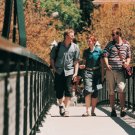Profiles of Past & Present Academic Staff
Ever wondered what inspired your lecturers and mentors to get into EEE? These are profiles of present and some past lecturers at the School of Electrical & Electronic Engineering. Here they explain why they studied in this area, why it is exciting, why they like research, why they are here and how it affected their careers.
Derek Abbott
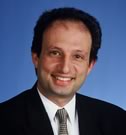
As a school kid I was somewhat backward & dopey. I was the one who never knew how to tie shoe laces, didn't know how to read a clock, didn't know left from right and never could do multiplication tables. Perhaps a little dyslexic and certainly a dreamer. I was the one who didn't appear at school events because I didn't know I was supposed to turn up. I needed everything to be spelled out.
Anyone who knows me now, would probably not believe the above story, but it is quite true! If I was like that, what were the signs that I might have had the makings of a scientist or engineer one day? Well I certainly had an inquiring mind: at the age of three I asked my Mum, who created God? At the age of three I asked a kindergarden teacher what the hard thing at the centre of a cherry was—she explained it was a seed that would grow into a big tree and took me outside to plant it; I still feel the enormous excitement I had at the thought of a such a small thing turning into a huge tree. At the age of four I performed my first "scientific experiment"—there were a bunch of empty cardboard boxes lying around and I decided to count them. I found that each time I counted them I got a different number and thought that boxes were magically appearing and disappearing—by a process of deduction I worked out by myself that it was not magic but that my counting ability was inaccurate; thus I consciously deduced my first conservation law and worked out the scientific principle of repeatibility! At the age of five I was fascinated by memory and was curious as to why I remember certain things and not others—so I did an experiment; I took off my coat and hung it on a hook and said to myself "from this day I will never forget this coat hanging on this hook." Also at the age of five I worried intensely about the question of who I was and why I was conscious. At school, the concept of infinity and taking a limit to infinity deeply troubled me...as for raising a number to the power of zero—oh no, that was madly absurd to me. The voices were deafening. It took years before I became comfortable with such alien concepts.
The famous physicist Richard Feynman once said that you can tell the destiny of a child: if the child takes apart radios, to see how they work, the child will become a physicist; and if the child plays with chemistry sets, he or she will become a chemist. Going by Feynman's rule, you would not be able to guess my career. At six, a friend of the family showed me how to use a soldering iron. At seven, I was fixing and taking apart radios and household appliances. At nine I was lighting fires everywhere with a magnifying glass. At ten, my parents asked me what I wanted for my birthday and I rather precociously said, "a copy of the British Pharmacopeia please" (this is a huge technical book listing the properties of medical drugs—they actually bought me the handsome 1968 version). At 11, I was fascinated by rooting powder and used to "steal" cuttings of exotic plants from Kew Gardens to see if I could make them take root at home—I was proud of my tamarind plant, but alas the British winter killed it. At 12, I bought a professional Liebig condenser and set up a chemistry lab in the garden shed—I was off my tree with excitement! At 13, I was making small explosives and performing acts of arson at school (fortunately never serious enough to harm anyone). Once I was caught and a desk, with a hole blown through it, was taken to the Headmaster's office, where I received a severe chastising. He also had to deal with me for attempting to stick 240 Volts mains directly into a glass of water. [Kid's reading this, please do not try these stunts.]
At 14, I became obsessed with going to Chess competitions [a nice safe pastime, kids]. At 15, I became obsessed with travelling all over London and researching the history of old lamp posts and letter boxes. At 16 I was attempting (unsuccessfully) to translate the complete works of Shakespeare into modern English whilst maintaining the beauty of the prose (perhaps something I might have another go at one day, when I retire). Like every good 16 year old, I also spent many late nights unsuccessfully attempting to solve Fermat's Last Theorem—I gave up after I worked through Euler's unsuccessful proof...I became dissapointed with mathematics: how could something so beautiful as Euler's 'proof' be so wrong? I struggled with that and many philosophical mathematical conundrums—my problem was I believed maths was something perfect waiting to be discovered; once I realised that mathematics is merely a creation of our own imaginations, it was a life-changing experience for me. It felt like the lifting of a huge burden off my shoulders. At 17 I got deep into photography and processed my own B&W, colour and even infrared film—I briefly flirted with wanting to become a photographer, but decided the money was too irregular—however, this interest influenced my future in that many of my research projects, today, involve photonics and imaging.
Around that time I had my first access to a mainframe computer on a teletype terminal using tickertape for storage and taught myself how to program on it. My first program on a roll of paper tape successfully found the first 1000 prime numbers—the sense of excitement was incredible, I felt like I had just landed on the moon. When you've suffered for years using logarithmic tables and slide rules, the simplest computers were like heaven. In the early 1970s, the first Texas Instruments pocket calculator was announced. It cost £200 and could only add, subtract, multiply and divide—but I had to have one. So I went ballistic and woke up at 4am every morning to do three newspaper delivery rounds and worked every Saturday in a smelly laundry—nothing could stop me getting that calculator. I painfully injured my kneecap in an accident and still limped around delivering newspapers in the bitter snow (in Britain, paper delivery was done on foot). After a year, I finally saved £200 and purchased the calculator....I guess this was the beginning of my empassioned love affair with electronic devices.
Then came crunch time when I had to decide what do to at Uni. I decided to do physics simply because I had a bad memory and couldn't remember all the stuff needed for biology and chemistry. Law and arts subjects also needed too much memory. Horticulture was out because all my experiments with rooting powder ended in my plants dying. Even though math was my strongest subject, math was out because on its own it was too divorced from the physical world for my liking—also at that time I hadn't resolved my philosphical qualms about the nature of maths. I had a morbid fear of needles, so studying medicine was out. Because of my bad memory, I was obsessed with being able to derive every formula from first principles—physics and engineering being ideal for such an approach. I was so obsessed with first principles, that in high school physics assignments, I would hand them up with ridiculous detail starting with relativistic formulae for classical problems, then finding the classical limit—and if the physics assignment needed the number pi I would show how one could calculate it (coming up with a different method each time).
With such distractions together with the fact that my early education was disrupted by my family moving around a lot, I didn't do that well in formal exams. In the British university system, in those days, you were interviewed by the University before acceptance. I must have done just OK, because I was accepted by the prestigious Imperial College.
However, in my high school library, I found a little green pamphlet that changed my life. In it contained a list of companies that would employ you and provide bursaries that paid you whilst you were at university. A great idea I thought! So on an old fashioned clunky typewriter, I typed out an application letter and copied it 50 times on an alcohol-based Banda machine (that is what we used in the days before photocopiers). I sent the letters to 50 randomly selected companies on the list. I got only 2 positive replies, and one was from the General Electric Company (GEC) who interviewed me and then awarded me the bursary. The deal was I had to defer Uni for one year, work for GEC in the first year, and also work for them in all the Uni holidays. Then, the following year, I turned up on the doorstep of Imperial College, to start after my year of work experience. However, my name was not on the class list! "Who are you?" they said. "Errrr, I was accepted here last year," I said. "Sorry, that was last year, you should have filled out the deferral form. We are now full. Goodbye," said the Registrar giving me short shrift. Nobody had told me about any deferral forms. Remember I was the kid that needed everything spelled out.
Coincidentally, on that day, my Mother happened to hear on the radio that Loughborough University had made some breakthroughs in laser-based research. "Why don't you apply there?" she suggested. I followed her advice and got accepted. It is funny how one's path in life can twist and turn suddenly, and the Loughborough experience certainly shaped my future research work. In an electronics undergrad lecture there, the legendary Prof Nick Philips, had me totally hooked: his derivation of Johnson's thermal noise formula had an error in it. He was quite frank about the error. Instead of complaining to the Head of Department that we had lecturers that taught us wrong stuff, I became inspired! I could see the proof was essentially elegant, and so I became obsessed with trying to improve the proof and make it correct. It so happened that my vacation work at GEC involved measuring thermal noise in MOSFETs using a spectrum analyser and so I was immersed in both the practice and the theory. The final proof appeared years later in my PhD thesis, at The University Adelaide—one of my supervisors, the legendary Prof Bruce Davis, provided the right guidance to finally polish up my version of the proof properly. It was also at Loughborough, that I first read Richard Feynman's chapter on the Ratchet and Pawl and I spotted that there was something wrong with his proof—this became an obsession to correct the proof, and many years later with Juan Parrondo and Bruce Davis, we finally published a solution. This association with Parrondo, then led onto writing a series of papers on Parrondo's paradox, which is related to the ratchet idea and created a significant impact in the international scientific literature. So my advice to all students is to question everything! You never know where a "silly question" may lead you.
I worked very hard in my undergraduate years, both studying and working in industry at the same time. I never believed any formula given to us by a lecturer, and spent long hours in the university library deriving everything from first principles myself (a hang over from my high-school days). Because I was the kid that needed everything spelled out and nobody told me that you could get help from lecturers, I never once visited a lecturer in his office. All my work was done alone in the library the hard way. No one told me that it was OK to work together in groups either. I must have been the worst nightmare lecturers could ask for—I was the annoying student who sat at the front row of the lecture and kept constantly interrupting with tricky questions. In those days if you failed one subject, you failed everything. So I passed my exams more out of fear than anything else—but still not doing that well, due to my usual distractions. In those days the university computing was in Fortran on a main-frame using punched cards. I remember feeling a sense of huge excitement over writing a program to invert a matrix. The punched cards had to go on an overnight batch job and you got to do the debugging the next morning—so it took a whole week and a stack of cards 6 inches high, just to invert a 3 by 3 matrix! Today we do that instantly in one line of MATLAB code! In my final year, we actually got hold of one personal computer (you wouldn't even call it that by today's standards)—this primitive machine was called a DAI (made in Belgium, I think) and I had the honour of interfacing it and programing it up for a closed-loop control experiment for my final-year project. These were the heady days when, if you had 16K of RAM, you were in fat city at the bleeding-edge.
When I started working in the research labs at GEC, in London, 1977, this is where I got really hooked on electronics. I designed and built dozens of discrete circuits from scratch and became very adept with soldering irons and at debugging circuits. I tested circuits, microchips and performed electrical measurements. These were the early days of VLSI and we used to put huge hand-drawn designs on the floor—then on our hands and knees we would check the designs for errors. In the early 80s when we started using commercial CAD tools, we always continued the tradition of checking plots on our knees. My present-day PhD students think I'm mad when I still insist on the importance of the old-fashioned visual check of any design plot. The 80's were exciting days, I worked on nMOS, CMOS, CCDs, SOS and micro-vacuum electronics. In those days we thought we were really hot when we started working on "advanced" 1.5 micron CMOS (1.5 micron processes then were so flaky, that if you told me then that one day we would have commercial deep-submicron CMOS, I would have laughed at you). The great thing about the GEC labs was that I did everything from the chip design itself, to designing the processing "cooking recipe" of the chip, to playing in the chip processing clean-room, to chip testing and to the board-level drive electronics. I was lucky to learn from role model giants such as Ray Bell who taught me the practical side, Stephen Lovatt who taught me a lot of theory, and David Burt who taught me the art of scientific writing and management.
In 1986, I moved to Australia and worked for Austek Microsystems in the area of chip design. This was a fantastic experience, working with a team of hot engineers, who worked professionally together. Then my association with the University of Adelaide began, when the then Dr Kamran Eshraghian paid me to do a few consulting jobs for him. He sucked me in further by twisting my arm into then becoming a tutor. I had no intention of doing a PhD, but Dr Eshraghian tricked me. He said, "you may as well enrol for a PhD, just in case the work you do here can be written up and then you may as well get a PhD from it." He said it so casually, that it sounded too easy. Working and simultaneously doing a PhD was not easy. But once I got going, the bug got to me and there was no turning back. Once I start, I gotta finish. Working with Dr Eshraghian was a great privilege, as he skilfully mentored me and taught me all about the arcane world of academic life. Having both Eshraghian & Davis as PhD advisors was an extraordinary combination and enabled me to achieve a lot more than I could on my own.
Given that, initially, I didn't even want to do a PhD, what did it do for me? Well, besides being a more potent magnet than pheromones, getting good seats on airplanes and opening many doors, the PhD honed my problem solving and critical thinking skills. It also means you get to put "Dr" in front of your name—initially, I swore that I would never use the title, but in the end I did as I realised it helped make up for the pain and sacrifice of doing a PhD. My advice to prospective PhD students is to follow your passion and pick a topic that interests you—don't do a PhD topic that you hate, but you think will be lucrative. Because the big picture is that it is the fundamentals learned and problem solving skills gained from your PhD that will open the real career doors. Topics come in and out of fashion—it is the investment in yourself and the person you become through your PhD experience that really matters in the end. Of course, if you happen to love a topic that turns out lucrative then great—but this is hard to predict.
So it has been a long and twisted path, with many turns, that brought me to where I am today. Why I am very happy with what I do? I have analysed this question and for me the essence is that I enjoy the stimulation of working with students (it keeps me young) and I enjoy "detective work." It is the detective work aspect of electronic engineering research that personally keeps me hooked. Having defined for myself that it is detective work that is my "hot button," I realise now that I could be just as happy being a historian or a police detective. Electricity and magnetism were not my strongest physics subjects at high school and so I was definitely a "late starter" when it came to fully appreciating EEE. My parents had me by accident whilst they were still students, and as a baby they gave me old electrical plugs to suck on and play with—being cash-poor students they couldn't afford real toys. It was perhaps this early exposure to electrical devices that worked on my subconscious and had a latent effect on my future.
Brief biography: Derek Abbott was born in South Kensington, London, UK, 1960. He attended Copthorne Preparatory School, Sussex, and Holland Park School, London, in the UK. His earlier schooling was fragmented and took place at a number of schools in the UK, USA and France. He obtained a BSc(Hons) in Physics from Loughborough University, UK, and a PhD in Electrical and Electronic Engineering from The University of Adelaide. From 1977, he worked at the GEC Hirst Research Centre, UK, and in 1986 worked at Austek Microsystems, Adelaide, Australia. He is presently a Professor in the School of Electrical and Electronic Engineering, The University or Adelaide and a Visiting Professor at the University of Leeds, UK. He has been an invited speaker at over 80 institutions around the world including Princeton, MIT, Santa Fe Institute and Cambridge. In 1977 he won the GEC Bursary Award. He won the 1998 Stephen Cole the Elder Prize and the 2002 PGSA Supervisor of the Year Award. With the School, he won the 2003 SPIE Award for Optical Science and Engineering. In 2003, he won the E.R.T. Tiekink Memorial Prize. In 2004, he won a Young Tall Poppy Award for science and the SA Great Award for Science and Technology. He is a Fellow of the IEEE (USA) and a Life Fellow of the IOP (UK). Prof. Abbott holds over 4 patents and 300 publications.
Andrew G. Allison
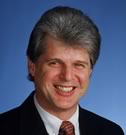
I feel that my life has been a long search and Electrical & Electronic Engineering has been an important stepping-stone along the way.
When I was in primary school I was immensely curious about nature and the physical world and science in general. I have always been fascinated by the "icky" things that you find under rocks, by things that explode, by things that change shape or colour or transform in some way. I was constantly being told that if I wanted to do science then I had to be good at mathematics. Unfortunately I was not naturally gifted at mathematics. I think that the subject is immensely interesting and rewarding, but I have always found progress to be slow and difficult. I still think that mathematics is a long hard slog and I still have to work hard at it every day.
By the time that I had finished secondary school, I had worked my way to the point where I was reasonably good at mathematics and I decided to study mathematical science at this university. While I was at university, I became very interested in digital electronic computers. I was very interested in using computers to solve mathematical problems. I didn't care very much about the application of the mathematics. I just enjoyed solving problems. Computers and mathematics seemed to be made for each other. One could use computers so solve mathematical problems and one could use mathematics to design computers, and it was all lots of fun.
After I graduated from university, I worked for a telephone company and I found that mathematics was not generally valued for its own sake, as a liberal art, or a thing of beauty or the great human achievement that it undoubtedly is. Mathematics was only valued in relation to the organisation's core activities. The most immediate applications were electronic data processing and management information systems. I spent a lot of time writing code and compiling statistics. Later on, I spent a lot of time installing, managing and maintaining computer local-area networks.
After working at the telephone company for a while, I realised that the engineers had the best pay and working conditions and that they were in positions where they could make important decisions that mattered, I decided that I didn't just want to be a better or more qualified programmer. I wanted to be an engineer. I had to work another three years for the company before I could arrange the opportunity to study. It took me another six years to complete my degree in computer systems engineering, part time. This was all a long hard slog. It required hard work and dedication. By the time that I had graduated, the structure and general cultural milieu of the telephone company had completely changed. The company had been "corporatised" ready for privatisation. It was shedding staff at a rate of about 10% per year and employment was not secure, not even for engineers. I worked for a while in the cable-television subsidiary but I found my next good opportunity at a university.
Life at a university is very intellectually stimulating but also very demanding. You are surrounded by people who are much smarter than you. It teaches humility and constantly encourages you to work hard and to improve your skills.
Working as an electrical engineer has brought a number of great themes together for me: I am still very curious about nature and the physical world and science in general. I get to do lots of mathematics and to spend a lot of time programming computers to solve mathematical problems. The study of electrical and electronic systems is a natural application for mathematics and programming and, finally, all my practical experience with the telephone company is still with me. I usually have a feel for what electronic systems "want to do," even before I formulate and solve the equations. I believe that engineering should always have a bias towards practical things.
I think of my career as a "work in progress." I am always trying my best to work out what the next step should be. I am currently enrolled in a PhD, here, at The University of Adelaide where I am investigating the stochastic transport of carriers and ions in physical devices. Electrical & Electronic Engineering is a very broad area that offers great opportunities for people to explore or to specialise as they develop their careers.
Brief biography: Andrew Allison was born in 1956 and attended Pulteney Grammar School. He completed a BSc in Mathematical Science at the The University of Adelaide in 1978. He initially worked for the Division of Horticultural Science of the CSIRO in the area of DNA. Between 1981 and 1995, he worked for an evolving group of telecommunications organisations: Telecom, AOTC, Telstra and Visionstream. He completed a BEng in Computer Systems Engineering at the School of Electrical and Electronic Engineering at The University of Adelaide in 1994 and now works as a lecturer in that School. He is currently enrolled in a Ph.D and is studying aspects of stochastic control and signal processing.
John Brydon
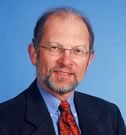
During my school days I had always enjoyed designing and constructing machines—both mechanical contrivances and electronic circuits based on valves and transistors. With no knowledge of design principles the electronics was a hit and miss affair but the valve circuits provided plenty of high voltage shocks to keep me focussed!
Because I was good at it at school I went to Cambridge to read Natural Sciences, intending to be an organic chemist when I "grew up." After a year I realised that this was not for me and restarted as an engineer. I was lucky to attend a faculty that first taught a solid background of general engineering followed by a third, specialist year. In my first two years I studied almost every aspect of engineering—chemical, structures, materials, metallurgy, fluid mechanics, thermodynamics, mechanical design etc. as well as the electrical topics. I subsequently found this broad engineering education invaluable when managing multidisciplinary teams of development engineers. In my final year I read Electrical Sciences, which largely consisted of topics from applied physics plus a few more technically oriented courses.
During my first degree we had two industrial secondments, the first to learn basic machine shop practices plus drafting and the second in an area of our choice. I chose to work in the medical electronics department of the local university hospital. Within a few weeks of starting this vacation job I was hooked on electronic circuit design. The timing was appropriate as the late 1960's were when the first comprehensive sets of logic chips became available plus the first monolithic operational amplifiers that allowed a rapid expansion in the applications of analog signal processing.
After graduating I joined the medical electronics department of a big London hospital, designing a variety of monitoring equipment and doing some research in medical signal processing. My employment arrangement was that for a year I spent half my time servicing equipment and, in return, was funded to study for an MSc in Medical Electronics. The experience of seeing first hand how equipment was used and misused and how it went wrong was another seminal period of education that greatly influenced me when I later came to design equipment myself.
Within a couple of years the first microprocessors started appearing and I got into these early, designing development systems from scratch because we couldn't afford to buy them. The next period in my professional life involved larger and more complex medical instrumentation designs and an increasing amount of work with embedded systems. I had also developed an interest in management and when I moved to a hospital in Scotland I was able to embark on this too.
Subsequently I was head-hunted back to London as Deputy then Acting Director of the Medical Physics department of a large teaching hospital. As the youngest Top Grade Physicist in the English Health Service I was now managing a department containing 5 sections and 55 people. My management learning curve had to be fast and was actively assisted by the hospital administration who provided some very effective training for me. During this period I still, however, made time for my continuing interest in digital signal processing (DSP).
Having married an Australian I moved to Melbourne in 1988 and started a second career in industry. Initially I worked for Philips Telecommunications designing experimental modems and then for myself, designing, marketing and selling my own DSP development boards. This led to an invitation from ResMed in Sydney to become their first Electronic Product Development Manager, responsible for designing treatment and analysis machines for respiratory problems. ResMed is one of Australia’s success stories and I was lucky enough to join them near the beginning of their meteoric rise from small local company to US-based international star.
Subsequently I started Resmed's Technology Development Group and then took a couple of years off to do some research into the quantification of respiration by measuring just body movement, something which remains an ongoing interest. During this period I also became increasingly interested in the legal side of technology, underwent some additional education and ended up also working as an expert witness, arbitrator and mediator. Which brings me to my current position as an independent consulting engineer, still designing embedded hardware interfaces with accompanying Windows software plus all the legal involvements previously mentioned.
Brief biography: John Brydon was born in London in 1948 and attended St Dunstan's College, Catford, UK. He has a BA from Cambridge University in Natural Sciences & Engineering, an MSc from London University in Medical Electronics & Physics and a PhD from UNSW in bioengineering. He is also a qualified arbitrator and mediator. John worked in the UK Health Service for about 16 years as a design engineer, researcher, project leader and technical manager, his last appointment being as Deputy/Acting Director of the Department of Medical Physics at the Hammersmith Hospital and Royal Postgraduate Medical School, London. He was kidnapped by aliens in 1988 and brought to Australia where he initially specialised in the application of Digital Signal Processing to mobile radio products for Philips and the Navy. Subsequently he worked for several medical equipment companies in various roles in design and technical management and is currently self employed as a consulting engineer working as a hardware and software designer, arbitrator & mediator and expert witness. He is the holder of 13 international patents in various areas of bioengineering and is an Adjunct Associate Professor within this department.
Shane Cloude
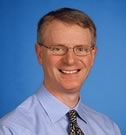
John Bothwell, my physics teacher at school, inspired me to study waves, something I am still pursuing through my current research in Radar here at the University of Adelaide. My journey has taken me around the world and given me the opportunity to work with some of the cleverest minds in the best-equipped laboratories, and it all started in my school physics lab. Beginning with some fun experiments in a wave tank, moving on to playing with optical prisms and light boxes and finally confronting the mystery of radio waves, which I learnt were somehow generated using transistors, capacitors and other electronic components and launched from wires and strangely shaped metal reflectors. I knew I just had to find out how these things worked.
This lead me to my local University in Dundee, Scotland, where I studied Electrical Engineering and Electronics and pretty soon discovered that I had made the right choice. Electrical Engineering combined for me all the fascinating aspects of physics, mathematics and electronics but made connections between them that deepened my understanding and further motivated me to learn more. It was therefore an easy choice for me to continue working towards my PhD after my first degree. For this I was lucky enough to obtain sponsorship from the Royal Signals and Radar Establishment in Malvern, the home of radar in the UK, to work with the radar group just up the road at the University of Birmingham. I worked closely with people in both labs who not only had years of experience but were international experts in their field. My degree in EEE gave me this unique opportunity. Nothing really matches a PhD for the chance to study something you like in great depth. As a bonus, it was at this time I also started to make my own mark through research publications and pretty soon many new opportunities were opening up before me. It is surprising how many new things are still out there waiting to be discovered and a PhD in EEE gives you the skill and confidence to develop your own ideas and to see them through. Since then I have worked as a teacher, researcher and consultant at Universities in the UK as well as overseas, with a spell as a Professor at the University of Nantes in France, at the German Space Research Centre in Munich and at NASA Jet Propulsion Laboratory in California, USA.
One of the nice features of an Engineering degree is the mixture of academic and business training it gives you. This training was important to me when in 1992 I set up a small business with two partners, commercialising advanced scientific software for modelling non-linear transient wave phenomena. In this way the initial simple motivation of John Bothwell to think about waves has lead me to an exciting and stimulating mix of academic study and business challenges.
Brief biography: Shane Cloude was born in 1959 in Chatham, England and went to school at Peterhead Academy in the North East of Scotland. He has a BSc(Hons) from the University of Dundee 1981, and a PhD from the University of Birmingham, 1987. He then worked at the Royal Signals and Radar Establishment (RSRE) as a radar engineer before returning to University as a Lecturer at the University of York, England. He was then appointed as a visiting Research Professor of Radar at the University of Nantes in France before becoming a Senior Humboldt Research Fellow at the German Aerospace Centre, DLR. In 1992 he was co-founder of Applied Electromagnetics Ltd. and for the next 10 years he developed advanced wave simulation software for communications and radar. In 2001 he was appointed an IEEE Fellow for his work in advanced radar techniques and in 2004 he moved to the University of Adelaide to take up the new DSTO chair in Microwave Radar and subsequently returned to Europe to further his research. He is a Fellow of the IEEE, Fellow of the Alexander von Humboldt Society and an IEEE Distinguished Lecturer in Radar.
Reg Coutts
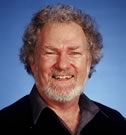
There were two key things during my high school years that influenced my choice to get into Electrical Engineering. Firstly, I was good at mathematics and sciences so that was the direction I was heading in. Secondly, my brother influenced me—he was six years older than me and was into model aeroplanes, electronics and making radios.
Another link in the chain of events is that my mother had dated the Post Master General (PMG) who was an Electrical Engineer. So she had warm feelings about the PMG Department, and encouraged us to pursue this direction. In fact my brother became a technician with the PMG department and then went on to study EE at the then South Australian Institute of Technology (SAIT) - but before he finished his degree he decided to quit and he became a priest instead.
So it kind of fell on my shoulders and the EE baton was passed on to me. Anyhow, it was the logical choice for me because I was strong in mathematics and sciences, and EE combined that with my interest in radio. At high school, around the age of 15, I became president of the school radio club and built my first double superheterodyne receiver - it worked! I was also interested in becoming a ham radio operator, but I met my first girlfriend around that time and so it didn’t happen due to the obvious distractions.
So I got accepted to study EE at The University of Adelaide, but unfortunately I didn’t win the Commonwealth Scholarship that I needed, because the rules then were that you had to pass all your matriculation subjects - unfortunately I failed French.
Consequently, I applied for a PMG Cadetship - fortunately I won, and this financed me through my undergrad years. The cadetship meant that I was locked into working for the PMG department on graduation - my undergrad friends thought I was mad to limit my options in this way. This mentality is quite different to today - then there were so many jobs around that you tried not to limit yourself, but today’s students would have no problem with guaranteeing a job early on!
During my undergrad years, I was not the usual uni student: I nearly got arrested by the police. I was into all sorts of activities such as protesting against apartheid and the Vietnam War - to go with the image I had long hair and drank occasionally.
When I graduated, I decided that I was not going to do a PhD. I wanted to do something useful for the world and did not want to work on technology that would end up in weapons to blow people up. But nevertheless I applied for a PhD scholarship just to see if I would get one or not.
So after graduation, I started work at the PMG Department and found that I didn’t really like the work they gave me to do then. It was moderately interesting but just wasn’t intellectually stimulating and challenging. Then a letter arrived offering a Commonwealth PhD scholarship, and I suddenly felt a PhD wasn’t so bad after all. So I returned to this university and had the honour of having the legendary Bruce Davis as my PhD supervisor.
Towards the end of my PhD, the EE Department here received a visitor from the Melbourne Telstra Research Labs (TRL). This visitor was Roger Smith who had originally done his Masters at Adelaide. He was an Acting Branch Head at TRL and he decided to recruit me, so I began working at TRL in 1976.
The actual Branch Head that Roger was standing in for, eventually returned and furiously laid down strict instructions never to recruit again when he was out of town—sending out the strong message that I got in “under the rug.”
In 1988, Harry Wragg, the Director of TRL came into my office with the commercial manager, Ian Campbell, with an opportunity for me. Ian wanted to start up a new Telstra mobile comms group and needed a Head of Strategy. I asked him what level this appointment would be at. He said, “level 1.” I said, “But I’m already at “level 1.” He replied, “Oh, okay, we’ll pay your train fares.”
I accepted the position, but five years later there was a Professorial Chair on offer at The University of Adelaide. Some colleagues back in Adelaide convinced me to apply. I did and I’ve been very happy to be back since.
Brief biography: Reginald P. Coutts was born in Adelaide in 1949 and attended St. Michael's College. In 1972, he completed a double degree in mathematics (B.Sc) and EE (B.Eng). After a brief stint at the PMG Department, he completed a PhD at the University of Adelaide in 1976. During the 1976-88 period he worked in the area of mobile communications at Telstra Research Labs (TRL) in Melbourne. During 1988-93 he was Head of Strategy for the Telsra mobile comms division. In 1993, he took up a the foundation Professorial Chair in Telecommunications at the University of Adelaide. Towards the end of 2003, he became Emeritus Professor with the School of Electrical and Electronic Engineering and established his own company Coutts Communications Ltd.
Bruce R. Davis
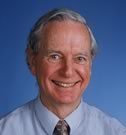
I was born in Memorial Hospital, Adelaide, 1939. I attended East Adelaide Primary School from 1944 to 1951 and Adelaide Technical High School from 1952 to 1955. I completed Leaving Honours after 4 years of high school and was 20th on the honours list for that year (1955).
Having a father who was a motor mechanic and later manager of an auto electrical department meant that I learned lots of ins and outs about vehicles, as well as general handyman skills. Around the age of 10 my parents bought me a radio crystal set for Christmas and later a 1 valve regenerative radio kit. My best friend was also interested in radio and electronics and we made many radio sets from fairly simple ones up to 5 valve superheterodyne receivers. I was an avid reader of Radio and Hobbies (later Radio Television and Hobbies) and was a member of the school radio club, which was sponsored by the then Institute of Technology. My friend and I were also interested in model aircraft and we made many control line models powered by small diesel and glow plug motors. My friend also built radio controlled aircraft, but I could not afford that luxury. From about the age of 14 onwards I fixed radios and other electrical equipment around my local neighbourhood, for fairly small sums of money.
At the end of high school, I really had no idea what I wanted to do, but my mother recognised my interest in electronics and made the executive decision, enrolling me into Electrical Engineering at the University of Adelaide. At that time I was only 16 and had to get special permission to enrol before the required entry age of 17.
During the degree, circuit analysis and electronics really absorbed my interest—in my 3rd year (1958) as germanium transistors first became available, I built an all transistor radio that I still have. Back then transistors cost around £5 each and so it was an expensive exercise. For my final year project in 1959 I built a parametric amplifier, which was a low noise RF amplifier using the properties of variable capacitance diodes. I had two periods of work experience, one at Philips Hendon where I had a lot of fun working on variable inductor tuners for car radios and the second at Weapons Research Establishment (now DSTO) working on transistor applications to tape recorders and transistorisation of their valve computer (WREDAC).
After graduating with first class honours, the then Head of Department, Eric Willoughby, encouraged me to do a PhD. Esaki (tunnel) diodes had just become available and were hyped up to be the “answer to everything,” including computer applications and low noise amplifiers and mixers, so I started my research working on tunnel diodes and built a mixer and an amplifier using these devices. However, tunnel diode amplifiers are negative resistance one port devices and it was extremely difficult to maintain stable amplification, so their early promise faded somewhat.
After about the first year of my PhD, I visited Telecom Research Labs (TRL) and met Albert Seyler who was the Director. As tunnel diodes seemed not to have fulfilled their early promise, I asked for his suggestions for alternative lines of research. He mentioned that feedback FM receivers were currently of great interest, so I decided to pursue that as a research topic and integrate as much as I had already done into it.
So I went back to Adelaide and recycled my tunnel diode circuits into realising a feedback FM system—I used a voltage controlled tunnel diode local oscillator and fed it into a tunnel diode mixer at 300 MHz. There were lots of optimisation issues concerning feedback and control of the closed loop response for the feedback FM system, and much of my research was concerned with its threshold behaviour, which was superior to that of normal FM if designed correctly.
I gave undergraduate lectures during the course of my PhD and near its completion one of the staff in the Electrical Engineering Department (Dr Murray Allen) encouraged me to apply for a position in the Department that opened up in 1963. I was accepted and started lecturing in communication systems and noise.
Unfortunately, being one of the first few PhD students in the Department, there wasn’t a lot of experience on how to present the thesis material and my examiners reports were a mixed bag. I initially lost motivation in correcting my thesis, but in 1967 the then new Head of Department, Jack Woodward, encouraged me to revise the thesis and resubmit, and the PhD was finally awarded in 1969. During that period I was married and also supervised a PhD student who graduated at the same time as I did. During my time here I have lectured mainly in the communication systems area, but also in electronics, circuit analysis, digital systems, signal processing, electrical fundamentals and others.
Through contacts suggested by Albert Seyler, in 1970 I spent a 1 year sabbatical at Bell Laboratories, Holmdel, New Jersey. At that stage they were developing the concepts for the cellular mobile telephone (the AMPS system) and I worked on various aspects of FM theory as applied to mobile communications—this was a very exciting year and my PhD work had placed me well ahead of the then current knowledge at Bell Laboratories. I went back to Holmdel in 1977 for a sabbatical, working on satellite systems, and while the work was interesting and I made some contributions, it was not quite as rewarding as the previous period.
From 1976 to 1982, as part of a research contract with Telecom Research Laboratories, Professor Bogner and I analysed propagation data related to mobile communications, which had been gathered by Telcom in the Melbourne metropolitan area. With the permission of Telecom, these reports were subsequently published and the paper received the Overseas Premium award from the IEE in 1986. In 1984 while on study leave, I investigated simulation techniques for satellite communication systems involving importance sampling, and a new technique was developed. This research was also sponsored by Telecom Research Laboratories. A paper published on this work received the IREE (Aust) Norman V Hayes medal for the “Most Meritorious” paper in 1989.
In 1990 I was contracted by DSTO to lead the Terrestrial Radio Systems section while the head was on study leave overseas. Subsequently in 1992 I spent my study leave in that section at DSTO working on various aspects of HF modems for military applications. In 1999, my study leave was spent researching some fundamental problems in noise theory in collaboration with a number of local and overseas research workers, leading to several papers presented at the UPoN conference, which was held in Adelaide that year.
Brief biography: Bruce R. Davis was born in Adelaide, 1939, and attended Adelaide Technical High School (now called Glenunga High School). He received a B.E. (Hons.) degree in EE, 1960, a B.Sc. in mathematics, 1963, and the Ph.D. degree in EE, 1969, all from the University of Adelaide, Australia. He has been employed with the University of Adelaide since 1964 and is currently an Associate Professor of electrical and electronic engineering. During 1970, he was with Bell Laboratories, Holmdel, NJ, studying various aspects of mobile radio communications and again in 1977, when he was involved in satellite systems research. He was a co-recipient of the 1986 IEE Overseas Premium Best Paper Award and winner of the 1989 IREE (Aust.) Normal W.V. Hayes Medal. In 1988, he developed Sugar—a circuit analysis simulation tool that was used extensively in the department. In 1992, he was a Visiting Scholar with the Communications Division of the Defence Science and Technology Organization (DSTO), Salisbury, South Australia, and was involved with high frequency data communication systems. From 1993 to 1998 he was Associate Dean (Postgraduate Matters) in the Division of Engineering and Mathematical Sciences. His research interests are in mobile communication systems, satellite communications, and high frequency data communication systems.
Sam P. Mickan
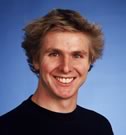
I chose to study Electrical and Electronic Engineering because I'd grown up with the explosion of high-tech devices in our lives, specifically driven by the semiconductor revolution—computers and mobile telephones, for example, were rapidly improving and becoming cheaper. It seemed an exciting and dynamic area of knowledge. Electronics also gave me an opportunity to work with and apply fundamental skills in science and mathematics.
My area of research is "T-rays", or terahertz radiation—electromagnetic radiation with a frequency of 1000 Gigahertz. T-ray radiation relates to very, very fast electronic processes (your computer is pushing it to operate at over five gigahertz), or equivalently very, very long wavelength light sources (T-rays are also called far-far-infrared radiation). T-rays are exciting because only in the last ten years has it been possible to fully access this region between electronics and photonics (light). My research has centred on using this new radiation to look at biomolecules, including proteins, in new and potentially valuable ways.
The beauties of research lie in the exploration of massive, unsolved problems, and in the complete freedom to find your own way to a solution—there are no wrong answers because there are no answers (yet). The reward of finding a solution is commensurate with the effort that goes into the search—in pure research, that effort can be enormous.
My degree has encouraged the development of careful, data-based scientific thinking, an understanding of working hard and working smart, and the opportunity to travel and work with the best in the world: in 2001 and 2002, I worked with one of the leading T-ray groups as a Fulbright Scholar in New York. Now I am lecturing here at The University of Adelaide because I believe in the quality of education this School is providing, and I believe in the research directions I am able to follow.
I think Electrical and Electronic Engineering is a place for people who want to know how things work—you will learn about the tools you need, both intellectually and materially, to develop a fundamental understanding of the technology around us, and from there to create the technology of the future.
Brief biography: Samuel P. Mickan was born in 1976 and attended St. Peter's College, Adelaide, South Australia. During his undergraduate degree, he studied for six months at the University of Stuttgart as an exchange student, obtaining a B.Eng in EEE at The University of Adelaide. During his Ph.D he was a visiting scholar, for two years, at the Center for Terahertz Research at RPI in New York, USA. Sam won the Schiller Prize in 1993, the Schneider Award for Excellence in 1997 and the Fulbright Scholarship in 2000. He won a 2005 Young Tall Poppy Award for science. He is currently a lecturer in the School of Electrical & Electronic Engineering at the University of Adelaide.
Andrew J. Parfitt
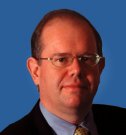
When I was young I was a boy scout. But I was less interested in jamborees and camping than in the “jamboree on the air” —which was an event held each year connecting scouts from around the world through the wonders of amateur radio. Radio fascinated me, and I joined a club to get my amateur radio licence while still in primary school. It wasn’t just talking with others from distant lands, but the technologies and gadgets that fascinated me—so it was nearly inevitable that after completing high school I’d end up doing electrical engineering (although I almost chose physics or music as options along the way!).
After finishing my BE at the University of Adelaide, I started work for DSTO. At my interview I had mentioned my interest in radio, and I ended up with some fascinating projects in radar and antennas. Fascinating enough even to consider going back to university to complete a PhD in electromagnetism, and then embarking on a research career in academia and government research agencies. Highlights, for me, have included some major antenna developments resulting in real, state-of-the-art hardware used in radar and telecommunications equipment around the world, and involvement with FedSat, Australia’s first satellite in over 30 years.
Doing the research into new technologies and hardware, and seeing them implemented, is fun, but leading research teams to bigger things was always an interest of mine. Although I don’t get my hands on lab equipment these days, putting in place development strategies and managing new technological advances that give Australian researchers and industry a global advantage is an exciting and rewarding career, and my engineering background gives me the skills to do it.
Brief biography: Andrew Parfitt was born in Romford, Essex, UK, in 1965 and migrated to Australia in 1971. He attended The Heights School, in Adelaide, and received his BE and PhD degrees from the University of Adelaide. In 1987 he joined the Australian Defence Science and Technology Organisation (DSTO), where he worked on radar and antenna related projects. In 1992 he joined the academic staff in the Department of Electrical & Electronic Engineering Department at the University of Adelaide, where he continued his interests in antennas and electromagnetism. From 1995 to 1997 he was also Associate Dean for undergraduate matters in the Faculty of Engineering. In 1998 he joined the Commonwealth Scientific & Industrial Research Organisation (CSIRO) in Sydney, Australia, where from 2000 he led the Space and Satellite Communication Systems Team. He was concurrently responsible for the Advanced Radio Frequency Systems program in the Cooperative Research Centre for Satellite Systems (CRCSS), and his team developed the Ka-band transponder for Australia’s FedSat satellite. In 2003 he was appointed Chief Executive Officer of the CRCSS and General Manager for Space Programs in CSIRO Telecommunications & Industrial Physics. In June 2004 he took up his current position as Professor and Director of the Institute for Telecommunications Research at the University of South Australia, while still retaining his role as CEO of the CRCSS. Professor Parfitt holds adjunct academic appointments at the University of Adelaide, the University of Sydney and Macquarie University. He is a senior member of the IEEE, and a past Chair of both the South Australia and New South Wales Sections. Professor Parfitt has published over 100 technical papers in journals and international conferences.
Braden Phillips
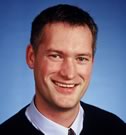
I have always had a love of technology. Star Wars, a Commodore VIC-20 and a string of good science teachers all fuelled my childhood desire to understand how stuff worked and even better, to invent new stuff. From a young age I had a bit of a knack with machines, then at age 10 I discovered computers and started programming. By high school, chemistry had grabbed my attention and become my favourite subject.
Why then did I choose to study electronic engineering at university? I blame an electronic project kit my parents gave me as a child. I could make it all the circuits operate but unlike machines or computers or chemical reactions I had no insight into how electronic hardware worked. From that moment I was hooked. It was a fortunate choice. Studying electronic engineering at The University of Adelaide not only gave me an opportunity to pursue electronics, but also to maintain my interest in other fields of science and technology. I completed a double degree in Engineering and Mathematical Science, and this allowed me to dip into subjects such as astrophysics, artificial intelligence, atmospheric physics, and number theory. These have all had a role to play in shaping the way I think and work as an engineer.
Over the summer of my third year at University, I took on a month's work experience with an industrial automation company. The month never really ended. At the end of the summer I kept my job as a project engineer and continued to work part time throughout the final years of my study. This pattern of part-time work and study continued as I went on to complete a PhD while running a small electronic design business. I guess it continues today. One of the unique things about being a university lecturer is the opportunity to be involved in teaching and study, research and also industry consulting.
My research interest is digital microelectronics... chip design. It is a good broad field that straddles aspects of computing, mathematics and electronics. Like all of engineering, it is not something you do for its own sake. You start with a problem that could come from any field—security, medicine, communications … and then design a chip to help solve it.
Brief biography: Braden Philips was born in 1971 and attended St. Peter's College, Adelaide, South Australia. He is a lecturer in the School of Electrical and Electronic Engineering at The University of Adelaide. Prior to the completion of his PhD thesis, "An Optimised Implementation of Public Key Cryptography for Smart Card Processors" at The University of Adelaide, Braden worked as a process control engineer and was a founding partner in Current Dynamics, an electronic hardware design venture. In September 2000 he took up a lecturing position at Cardiff University in South Wales, a post he held for 2 years before returning to Adelaide. Braden's research interests include VLSI arithmetic systems and information security.
Jim Schroeder
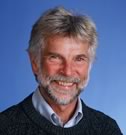
For a Christmas gift, in my Grade 6 school year, my parents bought me a crystal radio set. This basic set was comprised of a "cat's whisker" detector, an earphone, and a pre-wound antenna coil with a sliding arm for rough tuning. The radio circuit was completed by addition of a long wire antenna and a ground connection. As the small town we lived in (Waverly, Iowa, USA) featured a single 1,000 Watt AM Radio station transmitter, tuning was not too critical.
I became very interested in experimenting with various crystal radios. From Popular Electronics articles, I constructed a "foxhole radio," which uses a razor blade and graphite pencil lead as a detector, a coil wound around an oatmeal box, and strips of aluminium foil insulated by plastic wrap for a crude capacitor, or condenser as they were termed back then. Again, an earphone, long wire antenna, and ground connection served to complete the circuit.
The next radio I built replaced the imperfect "cat's whisker" detector with a 1N34A diode, and the performance improved dramatically. I discovered that after the local radio station signed off the air, and darkness fell, especially in the winter months, I could receive radio stations from nearby large cities. I was now spending money regularly on radio parts so I took on an early morning paper route, from 5:00am-6:00am, in Grade 6 to generate additional income. This line of work was to last through my High School years as I began to spend all of my income on radio projects of increasing complexity and cost.
Popular Electronics began to publish articles on low cost transistors, for example the venerable CK722, that were becoming available on the experimenter's market. A typical design project consisted of a single transistor, a capacitor or two, and a few resistors, to construct an audio amplifier. The improved performance from adding a single stage audio amplifier was impressive indeed. In fact, after midnight in the winter months, I could now receive a 50,000 Watt station in Little Rock, Arkansas, over 500 miles from my hometown. That experience was the first time I heard a "Southern Accent," and I realised that radio could open up the world beyond Waverly, Iowa to me.
As I entered my Junior High and High School years, I took on 7 mornings a week delivering papers now that my appetite had been whetted for additional radio projects. My first "real" radio came from an Allied Radio kit: A super-regenerative receiver that covered the AM Radio Band through Shortwave Bands, approximately 540 kHz-15 MHz. The expanded frequency coverage, coupled with the greatly increased sensitivity, opened up a whole new world of shortwave radio stations and ham radio operators. In fact I first heard The Beatles on BBC's shortwave radio station prior to their "American Invasion." A Beat Frequency Oscillator (BFO), that injected a tone into the detection circuitry, allowed Morse Code to be demodulated, and with limited success, Single Sideband (SSB) reception. So called "Product Detectors," the same coherent detector EE students are taught in basic communications theory, were very expensive back then.
I became very interested in ham radio and gradually learned the Morse Code required to pass the licensing exam by listening on the air and trying to "copy" as much text as I was able to. After a year or so I was proficient enough to pass the initial 5 Word Per Minute (WPM) code exam and theory exam (Ohm's Law, radio regulations, operating practices, etc) to receive the novice class license WN0KDB in 1964. The novice class was restricted to 75 Watts power, and CW operation. I purchased a 50 Watt CW transmitter and a Hallicrafter's Ham Band receiver, constructed an 80 Meter Band (3.5 MHz-4.0 MHz) "Inverted V" antenna, and I was on the air. Eventually I constructed a 40 Meter Band (7.0 MHz-7.3 MHz), which offered a differing propagation experience.
The on-air experience improved my code efficiency and technical knowledge to the extent that I passed the General Class license requirements of 13 WPM and a more detailed theory examination. The General Class admitted 1,000 Watts of power, code and voice, Single Sideband operation, and numerous additional frequency bands to operate within. My call sign changed to WA0KDB; I still retain that call sign to this day, along with VK5ATI issued by the ACA through a cooperative arrangement with the US FCC. Most important to me now, I could operate in the 20 Meter Ham Band (14.0 MHz-14.3 MHz) with the potential of worldwide signal propagation. I upgraded to a 500 Watt rig, and a 3-element tri-band (10, 15, 20 metre bands) "beam antenna" on the roof of my parent's house. The neighbours were routinely calling my parents with, "What's that boy of yours up to now?" No doubt they thought I was some kind of secret agent sending messages to the CIA operatives all over the world. The reality was that I was communicating with other ham radio operators throughout the world and expanding my exposure to other countries and cultures. I could think of no other hobby that offered such excitement, at least in the pre-internet era.
Eventually I matriculated from high school and joined the working world. With my technical background I was hired by a life insurance company to work in their computer centre as a computer operator—the centre featured an advanced IBM-1401 computer with 16K of "core memory," a high speed card reader, magnetic tape and disk storage, and a massively sized line printer.
Within the year I was drafted into the US Army, but quickly joined the US Navy in order to see the world that I had been exposed to via ham radio. My technical background vectored me into a technical training program. The Navy sent me to 1½ years of electronics school for an electronics technician (ET) rating prior to shipboard duty assignment. It comes as no surprise that I was trained in HF/UHF transmitter and receiver repair, plus a cryptographic rating to repair crypto gear as a specialty. I eventually served on two different ships home ported out of San Diego and Long Beach, with three tours to The Gulf of Tonkin region. Between patrol periods in The Gulf of Tonkin we were fortunate to be able to visit numerous foreign ports: Subic Bay (The Philippines), Hong Kong, Bangkok, Tokyo, Nagasaki, Singapore, Perth (my first visit to Australia, July 1971), Pago Pago, and Pearl Harbour.
After six years of Navy duty I was discharged, and now had access to "The GI Bill," a US Government veteran assistance program that provided a monthly stipend for veterans desiring to pursue university studies. If one lived simply, the stipend could be stretched to cover living costs, tuition, and books for 5 years of study. Naturally I chose an EE program given my radio electronics hobby since Grade 6, ham radio experience, and Navy electronics tech training and work experience aboard ship.
As an "old salt" by now, I entered The University of Iowa in 1973, earned the BSEE in 1976, and the MSEE in 1978, all on the GI Bill stipend payments. After working as a flight control system engineer for Rockwell-Collins in Iowa, and a communications/signal/image processing engineer at the Harris Corporation in Florida. I returned to graduate study and earned a PhD in EE, 1985, from Oklahoma State University. Since then I have worked in both commercial industry (communications signal processing engineer for BDM Corporation in Colorado, satellite communications engineer for DSpace in Adelaide) and academia (University of Denver in Colorado, UniSA/CSSIP/ITR, and University of Adelaide); I find both academia and industry to be very rewarding and I feel privileged that I can enjoy my profession through a variety of career experiences.
Brief biography: Jim Schroeder was born in Iowa, USA, in 1947 and attended the Waverly-Shell Rock High School in Waverly, Iowa, USA. After a one year stint as an IBM 1401 computer operator he served in the US Navy as an Electronics Technician. He received the PhD in EE from Oklahoma State University, and the BSEE and MSEE from University of Iowa. His experience includes flight control system analysis for commercial aircraft at Rockwell-Collins in Cedar Rapids, and signal and image processing algorithm development at Harris Corporation, Melbourne, Florida, and BDM Corporation in Boulder, Colorado. After 8 years as a professor with University of Denver EE Department he joined CSSIP in 1997 within the radar signal/image processing program. He is currently with the University of South Australia, assigned to the Institute for Telecommunications Research (ITR) and the Cooperative Research Centre for Signal and Information Processing (CSSIP). Between overseas trips, Jim teaches graduate courses in applications of signal processing to wireless communications and statistical signal and image processing techniques, and supervises graduate students at the University of Adelaide and the University of South Australia. He is currently an adjunct Associate Professor at the University of Adelaide and is a manager in the area of smart antenna technologies at DSpace Pty Ltd, Adelaide.
Neil H.E. Weste
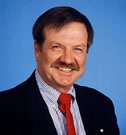
I remember the pivotal moment in my life when I decided that I wanted to follow the path of the integrated circuit - the then Dr Graham Rigby (to become Prof Rigby of UNSW) was showing my father and I over the new AWM (Amalgamated Wireless Microelectronics) factory in Sydney. I was about twelve years old and at that time they were making bipolar transistors, but it hooked me. This lead me through a range of hobby interests in electronics and particularly radio as a radio amateur (the locals, in the Riverland town I lived in, were amazed at my "bed" suspended on a mast—a huge phased array antenna!)
This burning interest lead to The University of Adelaide and Electrical Engineering. I almost turned into a Chemical Engineer (semiconductor processing I thought), but the circuits interest was a continual call and I swapped after a week of ChemEng in second year. Not to mention my friends were in EE. Like many at the time, we did the extra year to finish a BSc in Physics. This was a great year and lead to "real engineering" summer jobs with the Mawson Institute and the Radiophysics Group. Additonally, three of us (Richard Southcott, Andrew Davis and myself) did a Physics project where we built a complete a earth station to track a solar flare monitoring satellite. As this was the only southern hemisphere monitoring station during an Apollo mission, we got front page headlines as "Apollo's Guardian Angels."
We did another satellite earth station as a final year project and I guess I began to find my slot in life as a "hands on" type of engineer. At the end of final year, postgraduate study just seemed the obvious thing to do as I still hadn't learned how to design an IC. We had a great team and with a little help from our friends (in particular, Dr J.A.V. Rogers, "Mr Compooter"). We also built one of the first colour raster scan displays in the world. I went on to write some of the first advanced IC CAD software for that system and spent some of my time at the University of Edinburgh learning MOS design.
My PhD (and the reputation of Prof Bruce Davis and Prof Bob Bogner) landed me a position with the prestigous Bell Labs— initially for a year. That was to turn into an 18 year stay in the US and a tremendously interesting career both in there and after I returned to Australia. If I look back on it, it all started in the halls and lecture theatres of the Chapman Building and my time in Electrical Engineering at Adelaide. The PhD experience was central to developing methods of problem solving.
Brief biography: Neil Weste was born in 1951 in Renmark, South Australia, attending firstly Glossop High School and then Westminster. He has a BSc, BE(Elec) and PhD from the University of Adelaide and is presently an Adjunct Professor of this Department. He commenced work at Bell Labs Research, NJ in 1977 working on CAD for chip design. In 1981 he completed a sabbatical year in North Carolina at Duke Univeristy and UNC (Chapel Hill). He returned to Bell Labs in 1982 as a Department Head. In 1984 he joined Symbolics Inc. in Cambridge, MA, USA, and lead the design effort for a single chip Lisp microprocessor. In 1989 he cofounded and was president of TLW Inc., an IC engineering company where he completed chip designs for a range of large US companies. These included including North American Philips, Analog Devices, AT&T Microelectronics and Thomson Consumer Electronics. A number of groundbreaking chips were designed in the area of TV ghost cancellation, video telephony and communications. In 1995 he returned to Australia to a chair at Macquarie University working on chips for wireless LANs. In 1997 he cofounded Radiata Communications (with David Skellern) which designed the first chip sets for the IEEE 802.11a WLAN standard. In 2001 Radiata was acquired by Cisco Systems, for $US 295 million. At Cisco, he is now a Director, Engineering in the Wireless Networking Business Unit and is an Adjunct Professor at The University of Adelaide. Neil Weste is a Fellow of the IEEE for his contributions to custom IC design and a peer elected member of the IEEE Solid State Circuits Society. He is coauthor of a best selling text on chip design, which has been translated into Japanese, Greek and Chinese.


